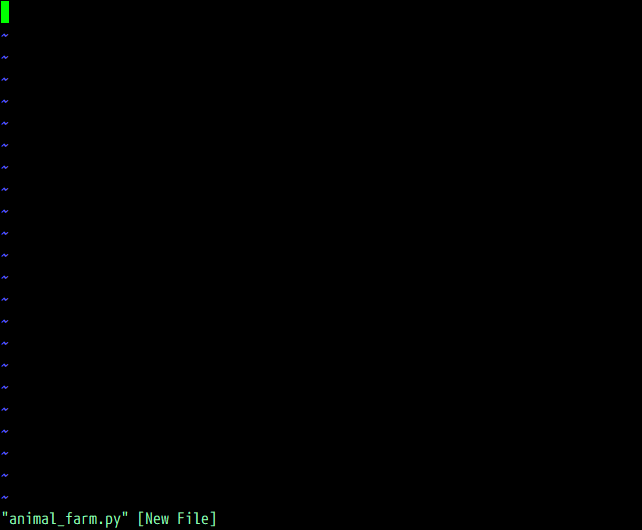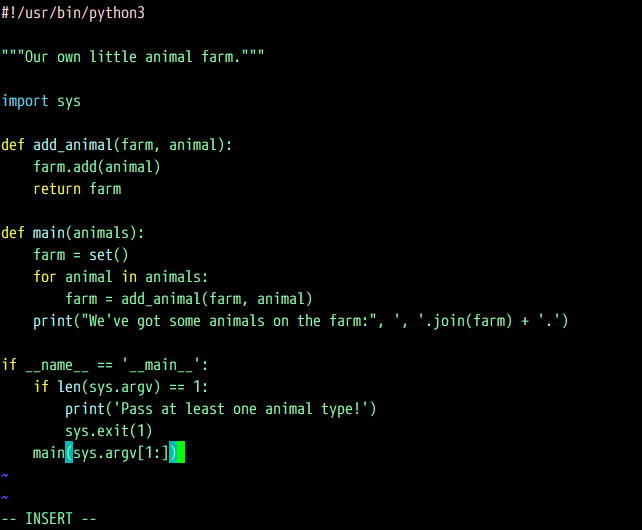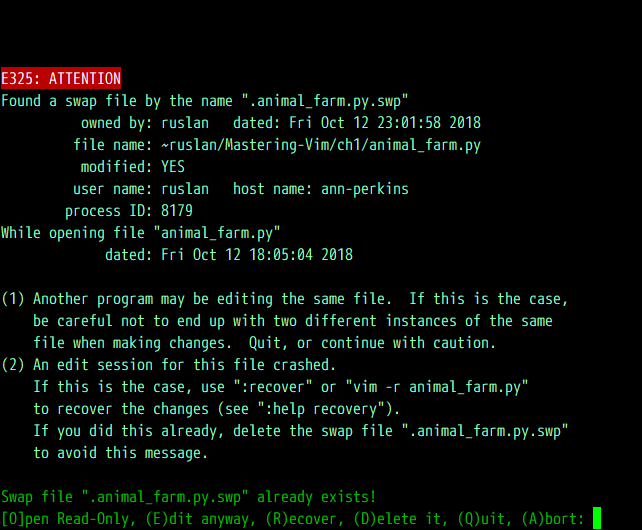Let's save our file! Execute the following command:
:w
Don't forget to hit Enter at the end of a command to execute it.
:w stands for write.
The write command can also be followed by a filename, making it possible to write to a different file, other than the one that is open (:w animal_farm_2.py). To change the current open file to a new one when saving, use :saveas command: :saveas animal_farm_2.py.
Let's exit Vim and check if the file was indeed created. :q stands for quit. You can also combine write and quit commands to write and exit by executing :wq.
:q
If you made changes to a file and want to exit Vim without saving the changes, you'll have to use :q! to force Vim to quit. Exclamation mark at the end of the command forces its execution.
Many commands in Vim have shorter and longer versions. For instance, :e, :w, and :q are short versions of :edit, :write, and :quit. In the Vim manual, the optional part of the command is often annotated in square brackets ([]). For example, :w[rite] or :e[dit].
Now that we're back in our system's Command line, let's check the contents of a current directory, as seen in the following code:
$ ls
$ python3 animal_farm.py
$ python3 animal_farm.py cat dog sheep
In Unix, ls lists contents of a current directory. python3 animal_farm.py executes the script using a Python 3 interpreter, and python3 animal_farm.py cat dog sheep passes three arguments (cat, dog, sheep) to our script.
The following screenshot shows what the three preceding commands should output:



 Free Chapter
Free Chapter






